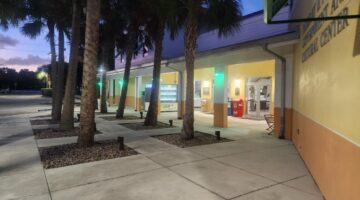Florida Keys Continues Rebounding after Hurricane Irma
Local Efforts Spur Recovery
ORLANDO, Fla. – Disaster recovery takes time but local initiatives in the Florida Keys after Hurricane Irma have accelerated the process.
The storm packed 130 mph winds when it made landfall on Cudjoe Key on Sept. 10, 2017 and continued through the Keys as a destructive, major hurricane. Officials and locals in the Keys saved lives, reduced disaster effects and waited little time to begin repairing and rebuilding.
Local economies resumed a short time after the storm and displaced survivors have continued making progress to return home. State and federal recovery programs have been essential in supporting local recovery efforts.
Infrastructure Help
The Key West Utility Board restored electricity to their 28,000 customers within days of the storm. FEMA recently obligated nearly $15.5 million for labor and materials like transformers and electrical poles the utility board needed for this achievement.
The grants are part of more than $21 million in federal disaster assistance to reimburse Hurricane Irma-related expenses in Monroe County and more is coming. Public Assistance applicants like local governments and nonprofits work with the state and FEMA to gather and submit documentation to move recovery forward.
FEMA provides grants to the state. Following the state’s review process and upon receipt of appropriate documentation, the state distributes reimbursement funds.
Housing Help
Locals and nonprofits have contributed invaluable resources like time, building materials and temporary places to stay. FEMA has also assisted survivors by helping them with places to stay while they worked on recovery plans and providing grants to make home repairs.
At the state’s request, the agency provided travel trailers, apartments and single family units to 243 Monroe County households who had been displaced by Hurricane Irma.
About 90 households—more than a third of those who received units—have made sufficient progress in recovery to move out and relocate to a more permanent home. This number increases weekly because of the dedication of Hurricane Irma survivors to move forward with repairs or rebuilding.
Monroe County survivors have also moved recovery forward with additional forms of housing help.
-
The U.S. Small Business Administration has approved about $180 million in low-interest disaster loans to repair and rebuild homes and businesses.
-
Survivors there have used about $26 million in FEMA grants—approximately $8,900 per eligible household—to repair homes and make them habitable. They’ve also received about $25 million in FEMA grants to help them pay for somewhere to stay if Hurricane Irma displaced them.
For more Hurricane Irma recovery information, visit www.FEMA.gov/IrmaFL.
[livemarket market_name="KONK Life LiveMarket" limit=3 category=“” show_signup=0 show_more=0] 





No Comment